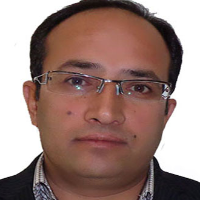Changes in Soil-Phosphorus Fractions as Affected by Municipal Sewage Sludge and Triple Super Phosphate under Saline and Non-Saline Conditions
The availability of phosphorus (P) is a limiting factor for the production of crops due to its reactions with soil components. Furthermore, there are concerns about the depletion of non-renewable global rock phosphate (the main source of P) reserves because of the high demand for P fertilizers. Therefore, it is essential to revisit existing agricultural practices to determine new resource management practices that utilize renewable resources. The application of sewage sludge could be an alternative P source; contrary to inorganic fertilizers, sewage sludge is cheap, contains nutrients, and improves soil quality due to contained organic matter. The total P content of sewage sludge may vary from less than 0.1% to over 14% on a dry solid basis, depending on the nature of the raw sewage being treated and the treatment process under consideration. However, the use of organic P resources can affect the soil chemistry, leading to changes to the P fractions and their quantities. Hence, the objective of this study was to compare the effect of the application of municipal sewage sludge and triple superphosphate on the distribution of soil-P fractions under saline and non-saline conditions.
To investigate the effect of municipal sewage sludge and triple superphosphate on changes in P fractions an incubation experiment was conducted in a completely randomized factorial design with three levels of triple superphosphate (0, 75, and 100 Kg ha-1 which were named T0, T1, and T3, respectively), three levels of municipal sewage sludge (0, 0.25 and 0.5% w/w which were named M0, M1 and M3, respectively), two levels of salinity of irrigation water (2 and 12 dS m−1, which were named saline and non-saline, respectively) and three replicates. The total number of samples was 54. The treated soils were incubated for three months and maintained at field capacity by adding the appropriate amount of saline and non-saline waters. P fractionated to KCl-P (soluble and exchangeable P), NaOH-P (Fe- and Al bound P), HCl-P (Ca-bound P), Res-P (residual P), and organic-P by sequential extraction method. Moreover, P percentage recovery for Olsen-P at each treatment was calculated. P concentration in samples was determined by the molybdate method. Data analysis was performed by MSTAT-C software, and the means were compared at α꞊5% by Duncan test.
The results showed that although the relative distribution of fractions followed the order of HCl-P < Organic-P < KCl-P < NaOH-P <Res-P, the changes in each fraction were dependent on the type of treatment and fraction. The amounts of KCl-P for application of municipal sewage sludge and fertilizer TSP combined, especially, T2M2 were 3.1 and 2.3 times higher than T0M0 in non-saline and saline conditions, respectively. The same result was obtained for NaOH-P. The combined and separate application of municipal sewage sludge diminished the relative distribution of HCl-P compared with triple superphosphate and control treatments in both salinities. However, the HCl-P in all treatments was more than 57% of the total P, suggesting that most of the soil P was in the carbonate phase. The treatments did not have a considerable impact on Res-P. The relative distribution of Organic-P increased by increasing levels of salinity and municipal sewage sludge. Therefore, it seems that municipal sewage sludge addition along with fertilizer P can reduce the negative effects of salinity and increase soil P availability compared with alone use of P fertilizer through growing the contents of KCl-P, NaOH-P, and organic-P fractions and, consequently, decreasing P entry into HCl-P fraction. Moreover, the application of municipal sewage sludge plus triple superphosphate increased P recovery as Olsen-P compared to a separate application of triple superphosphate which confirmed the advantage of the combined use of these sources.
The findings of this study indicate that the simultaneous application of municipal sewage sludge and triple superphosphate can effectively improve phosphorus (P) availability in saline conditions. This enhancement is attributed to the alteration of the relative distribution of non-stable P fractions, such as KCl-P and NaOH-P, which increase, while stable P fractions like HCl-P decrease. Moreover, the addition of municipal sewage sludge into soils led to a significant increase in organic C as well as the relative distribution of organic-P. Therefore, application of municipal sewage sludge can improve the physico-chemical properties of saline soil along with increase of P availability. Hence, further research on the growth response of halophyte plants as affected by these treatments is recommended.
- حق عضویت دریافتی صرف حمایت از نشریات عضو و نگهداری، تکمیل و توسعه مگیران میشود.
- پرداخت حق اشتراک و دانلود مقالات اجازه بازنشر آن در سایر رسانههای چاپی و دیجیتال را به کاربر نمیدهد.




